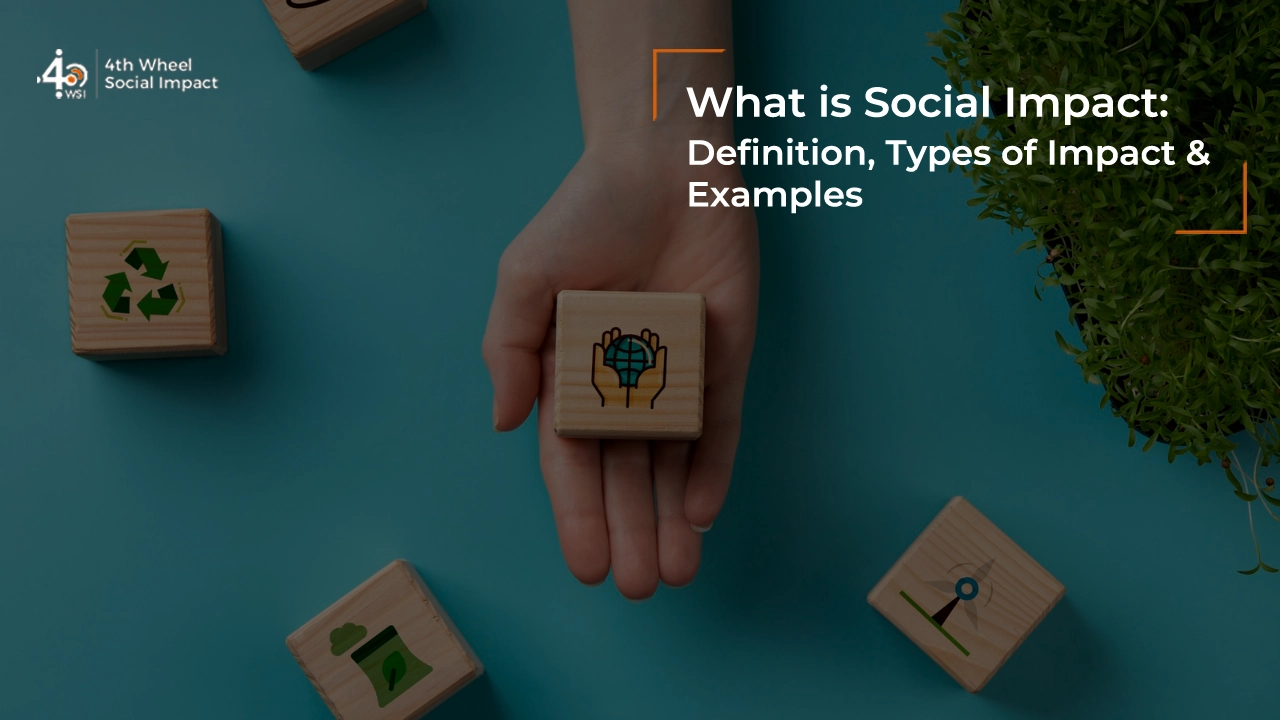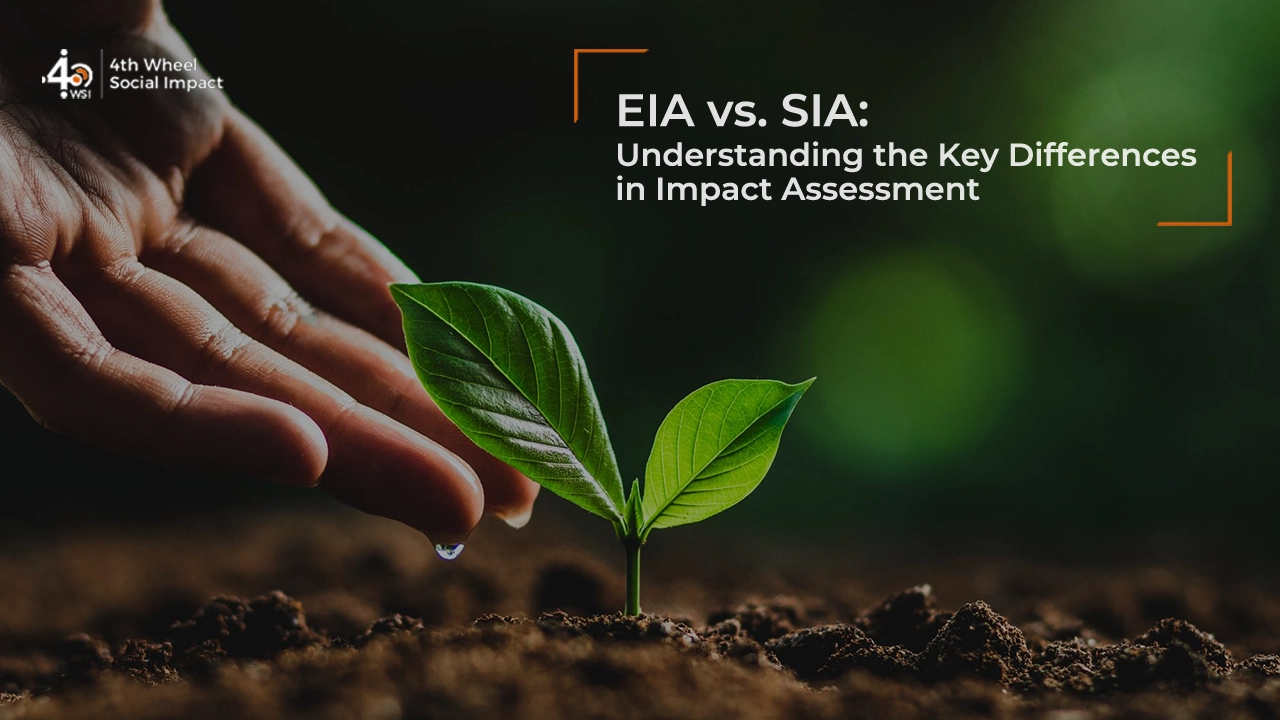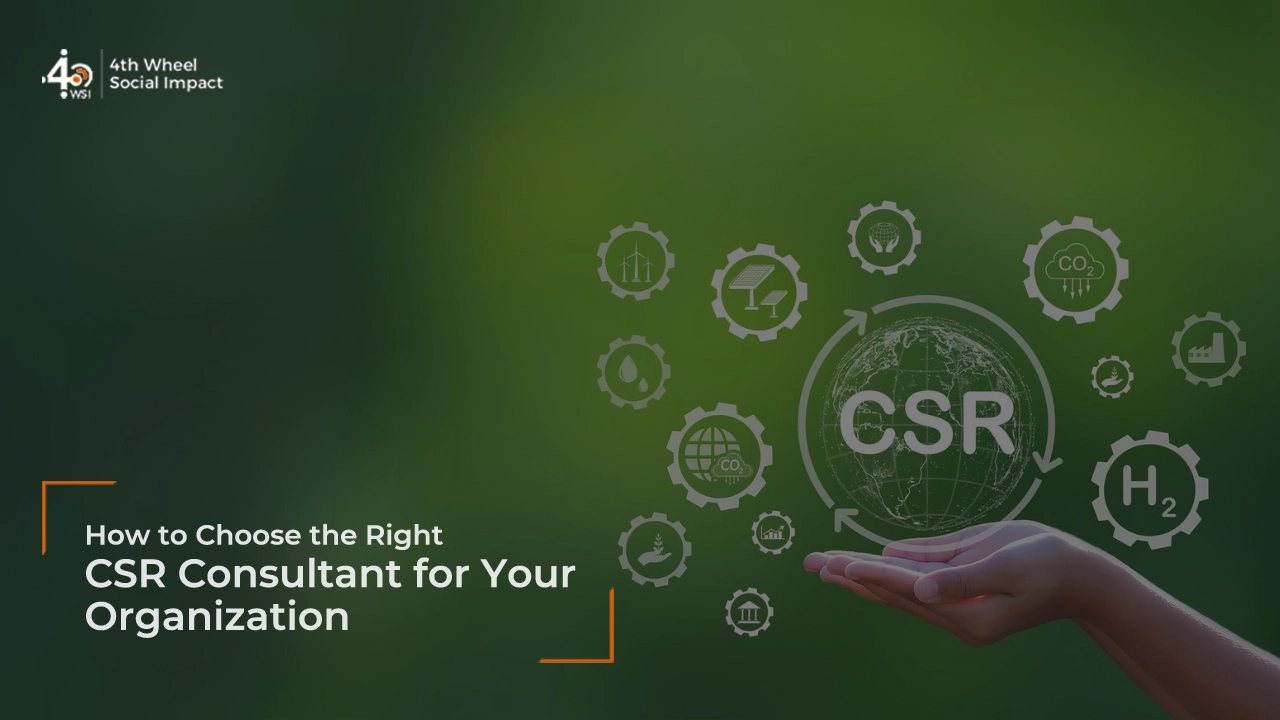Social impact refers to meaningful shifts that tackle societal problems and injustices. It captures the range of both direct and indirect outcomes that actions or interventions have on individuals and communities. These shifts may arise from deliberate initiatives by civil society groups, businesses, governments, or community networks or emerge as ripple effects from broader societal changes.
Such impact can take diverse shapes: improved livelihoods, strengthened wellbeing, or environmental restoration. Some social impact outcomes are immediate while others unfold over time, often shaped by years of persistent effort from key actors.
Social impact definition involves examining the broader consequences of choices made by individuals, institutions, and collectives. At its core, it reflects a shared capacity to respond to challenges and reshape society toward fairness and sustainability.
Table of Contents
Why Social Impact Matters for Businesses and Organisations
Businesses, government departments, and NGOs have a significant impact on the communities they serve and the environmental resources many communities rely on. The socio-economic attitudes and experiences of individuals are also heavily influenced by the activities and decisions of these organizations. Whether through employment, community development, or policy, these entities shape the fabric of society and the impact of society on people, in profound ways. Additionally, the way businesses manage environmental resources can have lasting effects on ecosystems and future generations.
Given these influences, it’s important for businesses and organizations to be mindful of the social and environmental impact they create. Every action taken, from product sourcing to community initiatives, contributes to a broader picture. By being aware of the ripple effects of their activities, businesses and organizations can make sure they are making positive contributions to society and the planet.
Key Terms and Concepts in Social Impact
To understand the social impact meaning, it’s important to familiarise yourself with a few core terms and frameworks. Below is an overview of some commonly used concepts in the field:
1. Cause Marketing
Cause marketing is a strategy where brands align themselves with social or environmental causes. It not only boosts public awareness around important issues but also strengthens consumer connection to the brand.
2. Circular Economy
A circular economy is a regenerative production and consumption model emphasising resource efficiency. Products, materials, and byproducts are reused, repaired, and recycled to minimise waste and extend their lifecycle.
3. Corporate Philanthropy
This refers to contributions made by companies—whether financial support, employee time, or other resources—to nonprofits or charitable organisations.
4. Greenwashing
Greenwashing occurs when organisations exaggerate or fabricate claims about their environmental efforts to appear more sustainable than they actually are, often misleading consumers in the process.
5. Impact Investing
Impact investing refers to investments made in businesses, organisations, or funds with the intention of generating measurable positive change alongside financial returns.
6. Impact Measurement
Impact measurement is the practice of assessing the outcomes of a project or intervention on individuals, communities, or the environment. It can account for positive, negative, direct, or indirect consequences. Tools like the Theory of Change are commonly used for this purpose.
7. Social Impact Measurement (SIM)
Social Impact Measurement (SIM) focuses specifically on evaluating the scope and depth of change brought about by social programs or interventions. It helps identify whether the intended outcomes were achieved and informs future strategies.
8. Sustainability
Sustainability involves practices that safeguard ecological balance and resource availability for future generations. It emphasises long-term thinking and replicable solutions that do not exploit people or the planet.
9. Sustainable Development Goals (SDGs)
The SDGs are 17 global goals introduced by the United Nations in 2015. These goals outline priority areas—ranging from climate action to quality education—to guide countries toward inclusive and sustainable progress.
10. Theory of Change (ToC)
The Theory of Change is a strategic planning tool that maps the pathway from activities to impact. It clarifies how inputs and outputs lead to outcomes and, eventually, broader change. This approach helps track a project’s progress and make course corrections as needed.
Triple Bottom Line (TBL)
TBL is a framework that expands traditional business metrics by including social and environmental considerations, in addition to financial performance. It’s often captured as “People, Planet, and Profit.”
Corporate Social Responsibility (CSR)
CSR refers to businesses’ responsibility toward the communities and environments they affect. CSR initiatives often include donations, community projects, and environmental conservation efforts. Depending on the company’s priorities, these programs may be short-term or limited in scope.
Environmental, Social, and Governance (ESG)
ESG is a set of criteria used to assess a company’s ethical practices, social responsibility, and environmental stewardship. Unlike CSR, ESG metrics are standardised and frequently used by investors to evaluate long-term sustainability and accountability across industries.
Social Return on Investment (SROI)
SROI is a framework that translates social and environmental outcomes into monetary terms. It helps stakeholders understand the economic value generated by a particular initiative or intervention.
Systems Thinking
Systems thinking is a holistic approach that considers the relationships and dynamics between different actors and structures—social, economic, and ecological. It helps identify how change in one area can ripple through and influence the broader system.
You Can Also Read: What is Social Impact Assessment? A Complete Guide for Businesses & Communities
Types of Social Impact

There are various types of social impact that affect different aspects of people’s lives and societal needs. Below are different types of social impact that help us to truly grasp the social impact meaning.
1. Economic Impact
Economic impact refers to the influence a business or organisation has on people’s ability to access financial resources and secure livelihoods. This can include job creation, fair and transparent wages, and support to allied or peripheral businesses. Indirect economic impact may involve creating technologies or digital tools that expand access to income opportunities or education, ultimately supporting decent livelihoods.
Example: A microfinance program that enables women to start their own businesses.
2. Civic and Human Rights Impact
This form of impact focuses on promoting and protecting the rights of individuals, especially those from marginalised groups. It may involve strengthening access to legal aid, increasing awareness of welfare policies, and advocating against systemic discrimination.
Example: A legal aid center supporting Dalit women facing land rights violations.
3. Policy and Governance Impact
Policy and governance impact involves supporting the development and implementation of policies that benefit communities. This can include advocating for decentralized decision-making and pushing for transparency and accountability in governance.
Example: A citizen-led audit that leads to better implementation of public schemes.
Examples of Social Impact in Action
There are various examples of social impact in business organizations and other fields. We take a look at few such examples of social impact created by projects that partnered with 4th Wheel Social Impact.
Magic Bus Foundation and HDFC Bank: The DISHA Programme
In 2016, Magic Bus Foundation partnered with HDFC Bank to launch the DISHA Programme across four Indian states—Maharashtra, Madhya Pradesh, Rajasthan, and Chhattisgarh—reaching 25 districts, 156 villages, 195 schools, and over 19,700 students. The initiative aimed to create meaningful change in the field of education by improving student retention, bettering the quality of education, and reducing dropout rates.
4th Wheel Social Impact conducted a midline assessment to evaluate the programme’s outcomes and understand its broader social impact.
GiveIndia Foundation
GiveIndia Foundation is a nonprofit organization that operates as a donation platform, connecting donors with grassroots NGOs across India. By increasing the visibility of these organizations and highlighting their needs, GiveIndia enables donors to contribute to causes they care about, primarily those focused on poverty alleviation.
4th Wheel Social Impact collaborated with GiveIndia to strengthen the capacity of nonprofit professionals, particularly in building skills related to impact measurement.
Social Impact in Different Sectors

Social impact can be understood via simple assessments. But to truly understand social impact, we need to look beyond basic social impact assessment and explore how different sectors can participate in this impact and actively benefit from applying its insights.
Agriculture: Empowering Farmers
Agricultural social impact mainly aims to empower farmers by improving yield, providing sustainable tools for farming, and fair income for their work.
Example: Northeast Initiative Development Agency (NEIDA) is a not-for- profit organization that works in the North-eastern states of Arunachal Pradesh, Mizoram and Nagaland to promote agriculture practices that are ecologically sound and beneficial to the farmers.
Healthcare: Accessible and Affordable Health for All
Social impact in the healthcare sector aims to provide consistent and reliable healthcare services for all people, preventive healthcare, and accessible and affordable services. It also aims to provide holistic healthcare.
Example: Simprints Technology is world’s first open source with privacy at its core. They aim to radically increase transparency and effectiveness of delivery of healthcare services.
Education: Bridging Gaps in Learning and Access
Social impact in the education sector involves improving access to education for children, especially from marginalised communities, improving education outcomes that lead to livelihood opportunities, building capacity, and fair wages for educators.
Example: Quest Alliance uses tech and storytelling to equip youth with 21st-century skills through self-learning.
Energy & Environment
Social impact in the energy sector focuses on renewable energy access, climate justice, and building climate-resilient communities.
Example: Barefoot College trains rural women to become solar engineers.
Legal: Law & Human Rights
Legal social impact guarantees access to legal rights, protection from violence, and inclusion of marginalized groups. It also includes creating awareness about policy advocacy and capacity building for policy advocacy.
Example: Nazdeek supports grassroots communities with legal tools for justice.
Journalism
Social impact in the journalism sector includes bringing stories from the margins, transparent and ethical news reporting, and informing the public to help them understand the systems around them. It also includes unveiling systemic oppression, corruption, or malpractice by any member of society.
Example: Breakthrough India addresses gender-based violence using media and grassroots engagement.
How to Measure Social Impact
Measuring and evaluating social impact is key to accountability and strengthening the effectiveness of interventions. Following are a few ways in which social impact can be measured.
1. Define Clear Impact Goals
Begin by setting specific, measurable outcomes you aim to achieve. Consider questions like: What change are we striving for? What is impact for the communities the project serves, and how do they experience it?
2. Develop a Theory of Change or Logic Model
Construct a framework that maps out how your activities lead to the desired impact. Detail your inputs, activities, outputs, outcomes, and long-term goals to visualise the pathway to change.
3. Select Appropriate Indicators
Choose a combination of quantitative and qualitative indicators that align with your objectives. Employ SMART criteria—Specific, Measurable, Achievable, Relevant, and Time-bound to effectively track progress.
4. Ensure Consistent Data Collection
Utilise various methods such as surveys, interviews, focus groups, and digital tools to gather data. Establish baseline measurements to accurately assess changes over time.
5. Analyse and Interpret Data
Examine the data for patterns and trends. Determine what changes occurred, why they happened, and if they can be attributed to your intervention. Pay attention to unintended outcomes as they can provide valuable insights.
6. Utilise and Share Insights
Translate your findings into actionable strategies. Use the insights to improve your programs, engage stakeholders, attract funding, and advocate for policy changes. Transparency in sharing results nurtures trust and drives further impact.
Conclusion
Considering the social impact of activities, whether it’s a business initiative or an individual’s action, is essential to understanding the factors that influence the quality of our lives. It also helps identify the environmental and social elements that will shape the lives of future generations. Tracking the consequences of social impact is not just important; it is non-negotiable.
As a Social impact consulting firm, we support nonprofits, philanthropic initiatives, and other social impact organisations in monitoring and evaluating their project outcomes, activities, and key indicators. Get in touch with us today!




